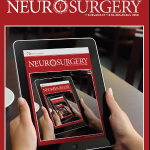Readmission of any patient to the hospital is considered a quality indicator. Was the patient discharged too soon for some reason? Were there any missed or undertreated injuries? Information from the Medicare system in the US (remember, this represents an older age group than the usual trauma patient) indicates that 18% of patients are readmitted and 13% of these are potentially preventable.
A non-academic Level II trauma center in Indiana retrospectively reviewed their admissions and readmissions over a 3 year period and excluded patients who were readmitted on a planned basis (surgery), with a new injury, and those who died. This left about 5,000 patients for review. Of those, 98 were identified as unexpected readmissions.
There were 6 major causes for readmission:
- Wound (23) – cellulitis, abscess, thrombophlebitis. Two thirds required surgery, and 4 required amputation. All of these amputations were lower extremity procedures in obese or morbidly obese patients.
- Abdominal (16) – ileus, missed injury, abscess. Five required a non-invasive procedure (mainly endoscopy). Only 2 required OR, and both were splenectomy for spleen infarction after angioembolization.
- Pulmonary (7) – pneumonia, empyema, pneumothorax, effusion. Two patients required an invasive procedure (decortication, tube placement).
- Thromboembolic (4) – DVT and PE. Two patients were admitted with DVT, 2 with PE, and 1 needed surgery for a bleed due to anticoagulation.
- CNS (21) – mental status or peripheral neuro exam change. Eight had subdural hematomas that required drainage; 3 had spine fractures that failed nonoperative management.
- Hematoma (5) – enlargement of a pre-existing hematoma. Two required surgical drainage.
About 14% of readmissions were considered to be non-preventable by a single senior surgeon. Wound complications had the highest preventability and CNS changes the lowest. Half occurred prior to the first followup visit, which was typically scheduled 2-3 weeks after discharge. This prompted the authors to change their routine followup to 7 days.
Bottom line: This retrospective study suffers from the usual weaknesses. However, it is an interesting glimpse into a practice with fewer than the usual number patients lost to followup. The readmission rate was 2%, which is pretty good. One in 7 were considered “preventable.” Wounds and pulmonary problems were the biggest contributors. I recommend that wound and pulmonary status be thoroughly assessed prior to discharge to bring this number down further. Personally, I would not change the routine followup date to 1 week, because most patients have far more complaints that are of little clinical importance than compared to 2 weeks after discharge.
Reference: Readmission of trauma patients in a nonacademic Level II trauma center. J Trauma 72(2):531-536, 2012.



